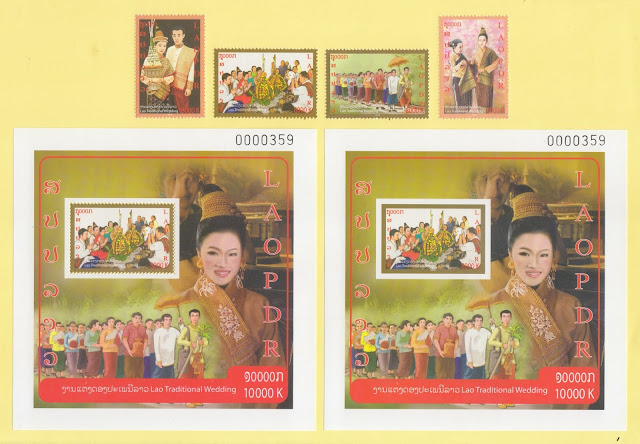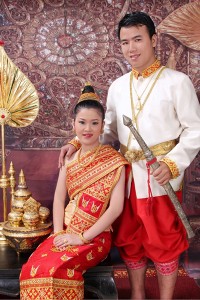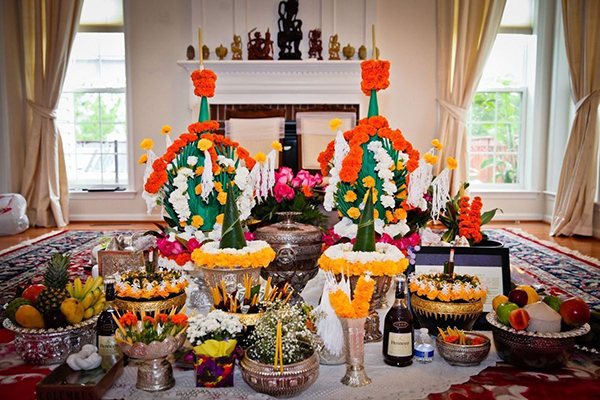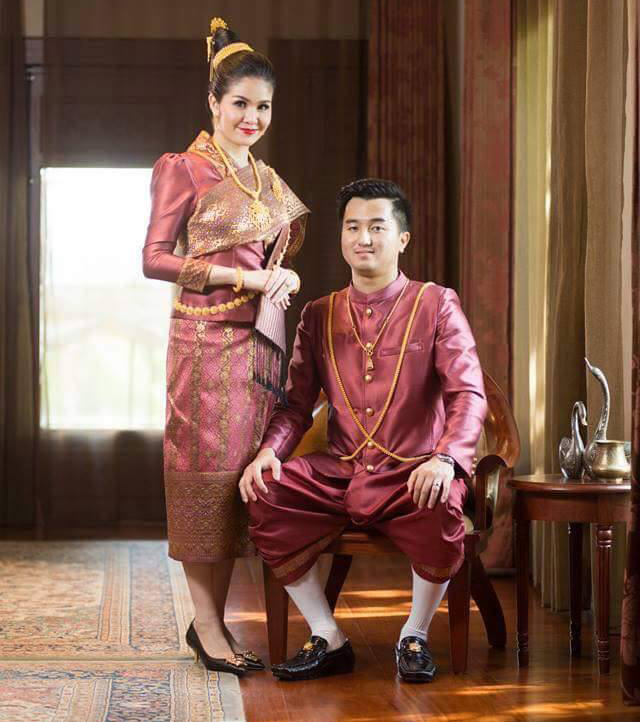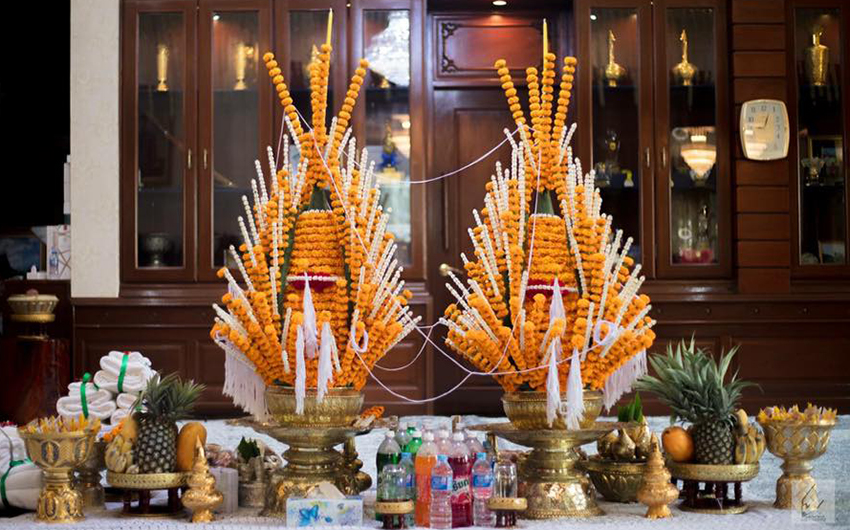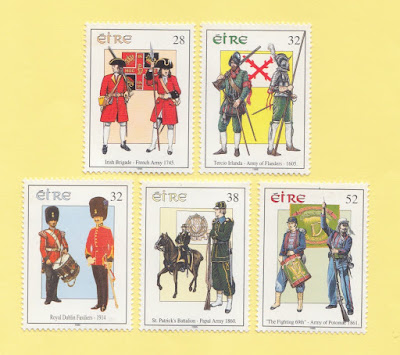Technical Details:
Date of Issue: 8 March 2017
Stamp Size: 31 mm x 46 mm
Design: Vongsavanh Damlongsouk
Perforation: 12¾ x 13
Quantity: 10,000 pieces
Quantity: 1,000 (SS Perforation)
Quantity: 1,000 (SS Non-Perforation)
Color: Multi Color
Printing Process: Offset
Printing: Vietnam Stamps Printing
Laos Traditional Costumes
Like Cambodians and Thais, Laotians wear glamorous traditional costumes which reflecting the richness of their spiritual life and sense of art. Costumes of Laotians diversified among different ethnics, presenting their distinguished concept about nature.
Date of Issue: 8 March 2017
Stamp Size: 31 mm x 46 mm
Design: Vongsavanh Damlongsouk
Perforation: 12¾ x 13
Quantity: 10,000 pieces
Quantity: 1,000 (SS Perforation)
Quantity: 1,000 (SS Non-Perforation)
Color: Multi Color
Printing Process: Offset
Printing: Vietnam Stamps Printing
Laos Traditional Costumes
Like Cambodians and Thais, Laotians wear glamorous traditional costumes which reflecting the richness of their spiritual life and sense of art. Costumes of Laotians diversified among different ethnics, presenting their distinguished concept about nature.

The first sign to recognize Lao women is their traditional silk skirt called as Sinh. Travelling along Mekong River, you will easily find Lao women in sinh working on the fields, selling agricultural products or performing traditional dance. As written in Traditional Dress Key to Preserving Culture that “The styles of sinh not only represent the variety and abundance of our natural resources, but also the inner hearts and minds of the people”, sinh is worn with pride of Laos women about their homeland.
In terms of design, sinh is quite simple as it is a tube skirt made of silk or cotton. However, this simple skirt may lure your eyes due to its delicate embroidery motifs. Sinh are diversified in terms of colors, motifs and designs among people of different culture, social status, communities and regions. Regularly, sinh includes 3 parts: the houa sinh (waistband), pheun sinh (body, main part) and the tdin sinh (hem).
Traditionally, Lao women often wear sinh as the lower part with blouses over the waist. Sinh worn by Lao women in daily life is quite simple with a little decoration. However, for important ceremonies, they often wear glamorous sinh with sophisticated embroidery motifs and even jewelry.
Lao men often wear yao or hang – a wrapped around skirt. It is simply designed with two ends twisted together, pulled between the legs and fixed into the waist band at the back. However, it takes a great amount of time to make yao or hang as it is made of heavy plied silk and delicate embroidered.
Overall, traditional costume of Laos is such a work of art, reflecting skillful handicraft technique as well as culture of Laotians. Laotians’ costume is one of the factors making the simple but attractive beauty of “the Land of Elephant”.
In terms of design, sinh is quite simple as it is a tube skirt made of silk or cotton. However, this simple skirt may lure your eyes due to its delicate embroidery motifs. Sinh are diversified in terms of colors, motifs and designs among people of different culture, social status, communities and regions. Regularly, sinh includes 3 parts: the houa sinh (waistband), pheun sinh (body, main part) and the tdin sinh (hem).
Traditionally, Lao women often wear sinh as the lower part with blouses over the waist. Sinh worn by Lao women in daily life is quite simple with a little decoration. However, for important ceremonies, they often wear glamorous sinh with sophisticated embroidery motifs and even jewelry.
Lao men often wear yao or hang – a wrapped around skirt. It is simply designed with two ends twisted together, pulled between the legs and fixed into the waist band at the back. However, it takes a great amount of time to make yao or hang as it is made of heavy plied silk and delicate embroidered.
Overall, traditional costume of Laos is such a work of art, reflecting skillful handicraft technique as well as culture of Laotians. Laotians’ costume is one of the factors making the simple but attractive beauty of “the Land of Elephant”.
Sinh (clothing):
The sinh (Lao: ສິ້ນ, Lao pronunciation: [sȉn]; Thai: ซิ่น, Thai pronunciation: [sîn]) is a traditional garment worn by Lao and Thai women, particularly Northern Thai and Northeastern Thai women. It is a tube skirt which can identify the woman who wears it in a variety of ways. In particular, it can indicate which region the wearer is from. In present-day Thailand, sinhs are typically worn in special events. However, in Laos sinhs are worn more regularly in daily life
Components:
A typical Tai Yuan sinh.
A Sinh is typically composed of three components:
1. Hua Sinh (Lao: ຫົວສິ້ນ), literally "the head of the sinh", is the waistband part, which is typically tucked in and hidden.
2. Phuen Sinh (Lao: ພື້ນສິ້ນ) or tua sinh (Thai: ตัวซิ่น), literally "the body of the sinh", is the body part which is the main part of the sinh. This part of the sinh is typically not detailed. In particular, it typically only consists of one or two colors.
3. Tin Sinh (Lao: ຕີນສິ້ນ), literally "the foot of the sinh", is the hem part. The hem is typically woven with a lot of details. The specific details of the hem can indicate where the sinh is made.
Textiles:
The sinh is made of silk, woven in ornate motifs with delicate embroidery. They come in different textures and designs and are usually created in rural areas by ethnic groups.
1. Hua Sinh (Lao: ຫົວສິ້ນ), literally "the head of the sinh", is the waistband part, which is typically tucked in and hidden.
2. Phuen Sinh (Lao: ພື້ນສິ້ນ) or tua sinh (Thai: ตัวซิ่น), literally "the body of the sinh", is the body part which is the main part of the sinh. This part of the sinh is typically not detailed. In particular, it typically only consists of one or two colors.
3. Tin Sinh (Lao: ຕີນສິ້ນ), literally "the foot of the sinh", is the hem part. The hem is typically woven with a lot of details. The specific details of the hem can indicate where the sinh is made.
Textiles:
The sinh is made of silk, woven in ornate motifs with delicate embroidery. They come in different textures and designs and are usually created in rural areas by ethnic groups.


